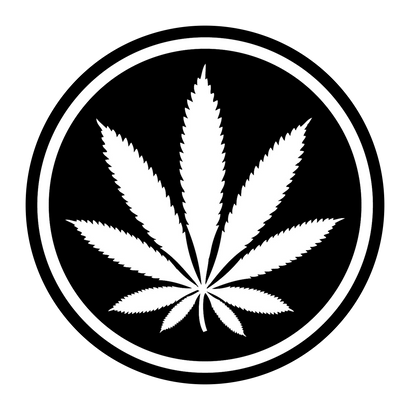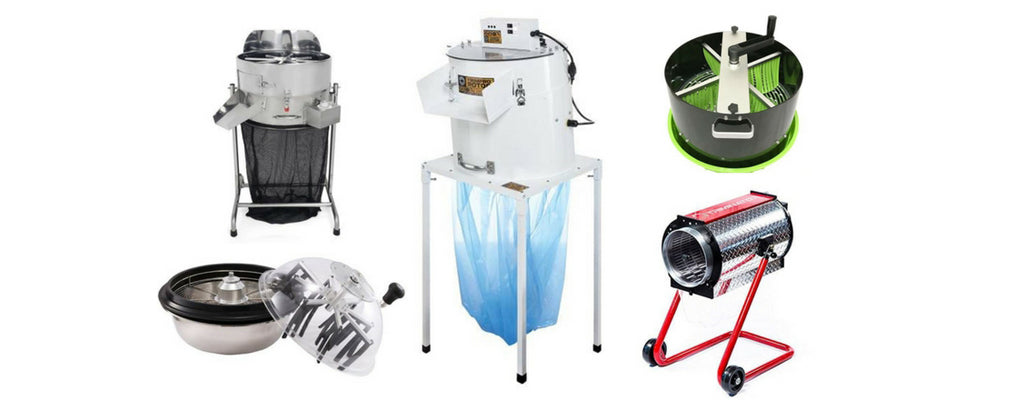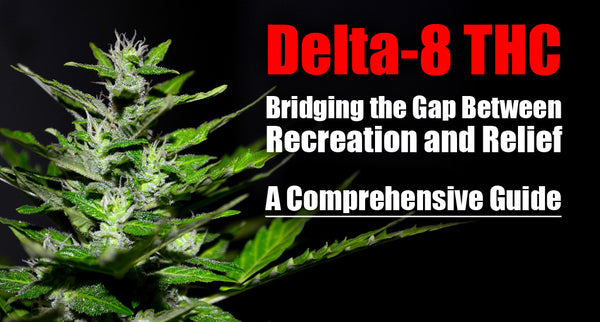
Mastering the Art of Cannabis Cultivation: A Comprehensive Guide to Growing, Trimming, and Processing Your Own Buds
After months of attention, patience, and effort to grow your beloved crop, it is time to decide whether you will trim, and if so, how you will trim your harvest.
Many people fear the process of trimming cannabis buds (also known as "manicuring" your cannabis). If you decide to trim, how close do you do it? Do you leave a little leaf like a fringe on a skirt? Or do you trim strictly for the full bud experience? My friend's husband has no use for trimming. He's a “trim before you grind” kind of guy, and I say, why not? There's no need for a mix!
Why Trim Your Cannabis Buds?

Some growers believe that trimming your buds results in a better look. Trimmed cannabis buds have a more uniform appearance, showcasing the calyces, pistils, and their trichomes. Consumers tend to prefer a presentable and aesthetically pleasing product. If you're transitioning from consumer to producer, you're probably familiar with "bag appeal," or a product that looks enticing on its own. As you can see in the picture above, the manicured nug looks more appealing to most people than the untrimmed one beside it.
Recently, especially after legalization in numerous states, a good trim is associated with high-quality bud, and untrimmed buds tend to be less appealing to many users. Many smokers believe that when trim leaves are smoked, they impact the overall flavor of the smoke/vapor and cause the smoke quality to be much harsher. There is a general consensus that trimmed buds are widely preferred, but when you’re growing for personal consumption, prepare your buds however you please! The sugar leaves, particularly rich in trichomes, can be used for smoking if you're not planning to prepare extracts.
In states where marijuana is legal, trimmed buds are similar to what you find in dispensaries. They are also what you’ll see in magazines and online photos. Finally, cannabis buds, especially their calyces, have a higher cannabinoid concentration than the rest of the plant (such as trichome-encrusted sugar leaves). This means that you will have a less potent product, gram-for-gram, if your buds remain untrimmed, compared with manicured buds. The trade-off is that you lose a small amount of weight from your buds when you trim them. But if you were going to use your trim for extracts, it’s hardly a loss.
Trimming your buds is the typical course of action for most hobby growers, and there are a few different methods you can use to get the job done.
Related Article: 1 Gram Cannabutter Recipe - How to Make Quality Marijuana Butter?
Trimming Techniques
1. Machine-Trimmed vs. Hand-Trimmed Bud
If you are growing weed as a hobby, hand trimming should suffice. However, if you have a large-scale grow, i.e., 100 ft² of canopy or more, you may want to consider investing in trimming machines.
Before purchasing a trimming machine, be aware that there are some common issues with them: they're not only expensive but also have a list of maintenance issues. Due to that, they haven't completely replaced hand trimming practices in most markets.
Based on my experience, trimming your bud calls for individual attention to each nug. Each strain is unique in terms of density, shape, and size; although the general idea is always the same, each strain, individual plant, and nug is unique and needs to be trimmed precisely for the greatest bag appeal and smoke quality. The trimming machine, unfortunately, almost certainly results in damaged trichomes and consistently, but imperfectly, manicured buds.
So, in conclusion, hand trimming is the best option for the typical hobby grower. It's an integral part of the experience of growing your own weed. As for those running a large operation, hiring people to trim your harvest can be expensive, and a machine trimming method might be feasible. But if you are the type of person who cares about producing high-quality bud, it’s totally worth it!
2. Wet Trimming vs. Dry Trimming (Before or After Drying)
There are two schools of thought regarding when trimming should take place:
- On harvest day; when the marijuana plant is alive/recently cut down and before prolonged drying. This method is referred to as "wet" trimming.
- "Dry" trimming takes place after the plant has been dried (approximately 10-15 days after harvest).
Wet trimming is possibly the most chosen method, widely used among growers, both new and old. Wet buds are much more voluminous, thus easier to process; trimming wet often results in a tighter and more precise final product. Additionally, it's easier to trim the sugar leaves when they are wet, as they are still extending outwards. Once dry, these leaves will curl up and may be more difficult to trim closely with precision. Wet trimming your buds may reduce the duration of your drying process as well, as the trimmed leaves are no longer present to hold moisture.
One of the cons of wet trimming is that it can be a bit messy. The process can turn clean scissors into a sticky mess (due to the resin that deposits on the blades as you trim), which can require frequent cleaning breaks.
On the other hand, dry trimming is preferred by many growers because the process is less sticky and messy, despite the buds being smaller and more difficult to handle.
Dry trimming can be helpful in lower humidity environments. You want your buds to dry slowly after harvest; leaving fan and sugar leaves should slow down the drying process to some extent.
Related article: Top 7 Online Stores for Marijuana Growing Supplies and Equipment
Recommended Trimming Tools
You won't be able to trim your buds properly without the right supplies. Here is what you will need:
1. Marijuana Trimming Scissors
When choosing your trimming scissors, here are some things to consider:
-
An article that evaluates some of the best options on the market is " Top 10 Best Precision Trimmers Pruning Shears."
-
As you will be holding those scissors for a long period of time, try them out before you buy them if possible. They should fit comfortably in your grip.
-
Keep in mind, as mentioned earlier, those scissors will get sticky due to the residue from the marijuana plant, so make sure to buy a pair of scissors that can be cleaned easily. It’s worth considering buying multiple pairs, so that you can have friends help with your trim, and so that you can have a pair soaking in ethanol or another cleaning agent while another pair is in use.
-
Once resin starts building up, your trimming scissors will slow down and your cuts will be less precise. This is when it's time to switch them up with the other pair, and soak/clean the used one simultaneously. I usually dip them in ethanol or rubbing alcohol (isopropyl) for up to 15 minutes (which will dissolve the resin), take them out, wipe them with a rag, and leave them to dry.
It can be a good idea to invest in two pairs of scissors and a larger pair of pruning shears. The larger pruning shears will help for branch cutting and the smaller ones for more precise trimming.
2. A Comfortable Place
You will need to find a comfortable and well-lit space to lay out your trimming tools when settling in for a long trim session. It's important to stay away from dusty places with excess hair, or any type of particulates to avoid contaminating your buds.
Since you will be sitting for quite some time while trimming your bud, finding a comfortable chair is very important. I suggest a zero gravity chair. This type of chair can provide phenomenal support for your back, while allowing you to recline to your preference. For your well-being, it's highly recommended to avoid hunching over and stressing your lower back during your trimming session. This means avoiding seating options like camping chairs and couches that don't provide adequate back support.
3. Smooth Tray and a Clean Desk
Most trimmers prefer using trimming trays. They're easy to move around and can provide a lot of utility for your session. Check out "Top 5 Best Trim Trays for Weed." We recommend any simply designed tray that provides a screen to collect kief. However, if you are on a budget, sprouting trays will be sufficient.
One last thing you should consider before buying a tray is how easy it will be to clean. We recommend either stainless steel or pyrex glass, but most polyethylene designs will suffice.
5. Proper Outfit
A solid color apron will help you identify and brush off any excess trim leaves or pistils that wind up on your lap. A silk apron won't adhere to the resin, making it easier to brush off the trim debris.
Gloves will keep your hands resin-free. My go-to gloves are BudGloves, but any disposable gloves will suffice. Gloves are useful for protecting your hands from the sticky resin, which can be a pain to clean off. They also protect your buds from any dirt and oils that may be on your hands while trimming.
6. Entertainment
A trimming session can take a long time, so it’s a good idea to have a plan to keep yourself entertained. Audio-based material is recommended over visual; music, stand-up comedy, podcasts, audiobooks, or even a good conversation with your fellow trimmers are all great ways to pass the time.
I actually sometimes "watch" TV – usually the type of TV shows I'm familiar with, which I don't need to actually watch, such as "Family Guy," "Seinfeld," and sometimes CNN. These familiar shows can provide background noise and entertainment without requiring your full visual attention, allowing you to focus on the task at hand.
Trimming Steps - Dry Method
Step 1: Remove the Fan Leaves - When initially harvested, the branches will be covered in fan leaves. Before starting the drying process, remove all the large leaves that do not have trichomes on them.
Step 2: Cut Buds from the Branch - Also known as “bucking down," once your marijuana plant is dry, you can go ahead and start trimming. Without trimming the buds, cut them from the branches into the desired size.
Step 3: Fill Your Tray and Trim Away - Collect the prepared buds in a paper bag, and put the bag next to your workstation. Grab a seat and a handful of your buds, and place them on your tray. Don't overload the tray - it may get too messy and eventually slow down your work, or you may end up with trim or buds on the floor or your lap.
Step 4: Manicure the Bud - Cut off the extra plant matter, i.e., sugar leaves. Angle your scissors towards the nug and keep the scissors moving while making detailed cuts.
Marijuana Bud Trimming Tips
-
Trim with the tips of the scissors, not the sides. This technique will keep your tools resin-free for a longer time.
-
Save the trim. It can be used for edibles and/or tinctures. Those trims still contain some cannabinoids, and if you are a frugal person, as I am, you will make good use of it.
-
Make sure to store your manicured buds in a proper container, preferably airtight containers such as glass jars.
Also, don't forget to save finger hash (scissor hash). This resinous build-up that occurs on your fingers and scissors while trimming is potent and can be collected for personal use.
Finally; Stop Visually Profiling Your Cannabis!
Cannabis enthusiasts worldwide often judge their weed by appearance. It's a common misconception that you can identify a strain just by looking at it. In reality, a skilled trimmer can style buds from the same plant in such varied ways, they appear to be entirely different strains.
There are thousands of Cannabis strains out there, with new ones being bred as we speak. While some characteristics, like the purple hue in certain strains, are distinct, judging solely by appearance is misleading.
The culinary world capitalizes on the fact that we "eat with our eyes" first. Presentation significantly influences our perception of taste, and this concept applies to Cannabis as well. Magazines and online platforms often showcase only the most pristine buds, leading to a skewed perception that anything less than a sparkling, white-coated nug is inferior. However, I've found that even less visually appealing buds can be quite potent and enjoyable.
The idea that you can visually determine the quality and type of a strain is, in my opinion, a fallacy. Legal Cannabis often faces such visual profiling. When patients, used to more informal packaging, open a bottle of legal Cannabis, they quickly judge the buds based on appearance. These buds have traveled a long way and deserve a chance. Pre-judgment based on looks can negatively affect one's perception of the strain and its grower.
The term "hand-trimmed" used to be a mark of quality, but it's not as common anymore. Hand-trimmed buds, carefully manicured, contrast sharply with machine-trimmed buds, which might look more uniform but lack character. You can really tell the difference once you grind them. Remember, these are flowers, and like all flowers, they vary greatly. If your Cannabis doesn't look like the picture-perfect bud in a magazine, don't be too quick to judge.
It's important to experience the bud fully - grind it, vape it, smoke it. The interaction of its terpenes with your receptors, the aroma-therapeutic effects, might surprise you. Sometimes, the "ugliest" bud might be the best match for you. You'll never know unless you give it a try.
Here is our complete Step by Step Beginners Guide to grow marijuana Indoors
- Step One: Choose the right strain/seeds. Here are the Best Marijuana Seed Banks
- Step Two: How to Build the Perfect Indoor Grow Room (For up to 6 Plants)
- Step Three: Germinating Your Marijuana Seeds and The Seedling Stage
- Step Four: Marijuana Vegetative Stage
- Step Five: Flowering Stage
- Step Six: Harvesting and Drying
- Step Seven: Curing and Trimming




